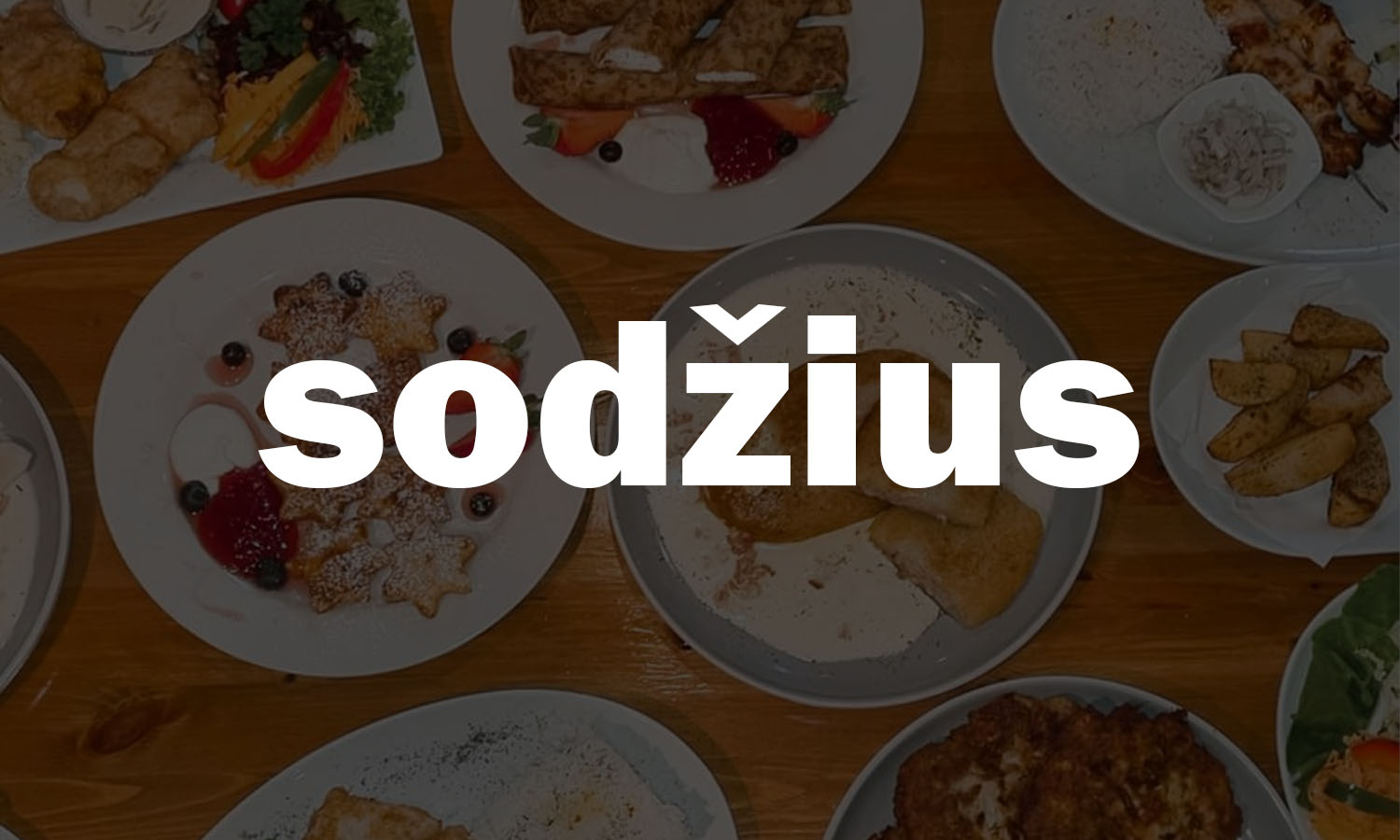Food
What Is Sodžius? Uncovering the Meaning, Origins, and Cultural Significance of This Unique Word

- Share
- Tweet /home/u433845138/domains/newsmm.co.uk/public_html/wp-content/plugins/mvp-social-buttons/mvp-social-buttons.php on line 71
https://newsmm.co.uk/wp-content/uploads/2025/05/3344-1000x600.jpg&description=What Is Sodžius? Uncovering the Meaning, Origins, and Cultural Significance of This Unique Word', 'pinterestShare', 'width=750,height=350'); return false;" title="Pin This Post">
Language is one of the richest expressions of human identity, and within it lie words that hold more than just definitions. One such word is “sodžius“. Though not widely known outside of Lithuania, this unique term carries cultural, historical, and emotional depth for those who speak and understand it. In this article, we will explore what “sodžius” really means, where it comes from, and why it still matters today.
Quick Bio Table of “Sodžius”
| Feature | Details |
|---|---|
| Word | Sodžius |
| Language | Lithuanian |
| Part of Speech | Noun |
| Grammatical Gender | Masculine |
| Meaning | Village, countryside estate, or rural community |
| Synonyms | Kaimas (village), Sodyba (homestead), Kiemas (yard/farmstead) |
| Dialectal? | Yes, primarily used in regional dialects |
| Cultural Relevance | Strong link to rural life, Lithuanian heritage, and identity |
| Modern Usage | Rare in urban centers; used in literature and folk storytelling |
| Etymology | Derived from historical rural terminology in Baltic linguistic roots |
What Does “Sodžius” Mean?
In modern Lithuanian, the standard word for village is “kaimas“. However, “sodžius” is often used in various dialects and traditional speech to convey a more intimate and heritage-rooted idea of a rural community or village. The word brings with it the imagery of a close-knit society, farming landscapes, and a simpler, pastoral way of life.
While “kaimas” can be applied broadly, “sodžius” suggests something more nostalgic and culturally rich. In some cases, it may refer to a cluster of farmsteads or even a traditional family estate passed down through generations.

Origins and Etymology of Sodžius
The Lithuanian language is one of the oldest living Indo-European languages, preserving many ancient forms and sounds. “Sodžius” is believed to have roots in the Baltic linguistic group, with connections to words referring to “cultivated land” or “settlement.”
The root word may be linked to the act of “sowing” or “planting”, which would make sense given its association with farming and rural communities. Over centuries, the term evolved locally in dialects and took on connotations of tradition, home, and community identity.
The rarity and specificity of the word make it particularly valuable in understanding regional linguistic identity in Lithuania.
Cultural Significance of Sodžius in Lithuania
Lithuania, a country rich in folklore and agrarian history, holds the countryside as an essential part of its national character. The sodžius represents not just a physical place, but a way of life that includes:
- Traditional farming and seasonal cycles
- Strong community ties
- Oral storytelling and folk traditions
- Local customs and spiritual beliefs
Many Lithuanian folk songs and stories are set in the sodžius, where everyday life blends with myth and ancestral wisdom.

As Lithuania modernized in the 20th century, especially under Soviet rule and later after independence, the sodžius lifestyle began to decline. However, recent cultural revival efforts have placed value on preserving this way of life as a national treasure.
Sodžius in Modern Context
In urban centers like Vilnius or Kaunas, the word “sodžius” may not be part of everyday language. However, in rural regions and among older generations, it is still used with pride and affection.
Many Lithuanians with rural roots look back fondly on their family sodžius as a symbol of authenticity and heritage. Some people even return to their ancestral homes during festivals or holidays to reconnect with their cultural roots.
Moreover, modern Lithuanian literature and cinema sometimes incorporate the concept of the sodžius to reflect themes of memory, belonging, and transformation.
Comparisons With Similar Words
Here are a few words that often overlap in meaning but differ in nuance:
- Kaimas: The general word for a village in Lithuanian. Used officially and in most modern contexts.
- Sodyba: A homestead or standalone rural house with land. Often used when referring to vacation homes or traditional estates.
- Kiemas: The yard or farmyard area, usually within a household’s boundaries.
- Sodžius: A dialectal, culturally rich term implying a close-knit rural community.
Why Preserving Words Like Sodžius Matters
Languages evolve, and with them, some words fade away. But words like “sodžius” carry more than linguistic utility they embody a worldview.
Preserving them ensures that future generations can understand their history, values, and identity more holistically. Efforts by linguists, educators, and cultural institutions in Lithuania aim to document and protect such dialectal gems.
From museums to school programs, the sodžius is celebrated as a symbol of Lithuanian perseverance and cultural richness.
10 Frequently Asked Questions About “Sodžius”
- What does “sodžius” mean in English?
It means village or rural community, often with deeper cultural connotations. - Is “sodžius” still used in modern Lithuanian?
Yes, mainly in dialects and rural areas, though less commonly in urban speech. - How is “sodžius” different from “kaimas”?
“Kaimas” is a general term for village, while “sodžius” is more traditional and culturally specific. - Can “sodžius” refer to a single household?
Not typically. It usually refers to a small community or group of households. - Is “sodžius” a formal word?
No, it’s considered dialectal and informal but rich in meaning. - What is the origin of the word “sodžius”?
It stems from ancient Baltic roots related to farming and settlement. - Is the term used in Lithuanian literature?
Yes, especially in regional stories and folk tales. - Can I use “sodžius” in academic writing?
It’s acceptable when discussing dialects, culture, or linguistic studies. - How do you pronounce “sodžius”?
It’s pronounced roughly as “SOH-jyoos,” with the “dž” like the “j” in “judge.” - Why is this word important today?
It connects Lithuanians with their roots and helps preserve cultural identity.
Final Thoughts
Understanding the meaning of “sodžius” opens a window into Lithuania’s rural past and cultural soul. More than just a term for a village, it is a symbol of belonging, memory, and identity that continues to inspire pride and reflection.
As global languages standardize and local dialects fade, paying attention to words like “sodžius” becomes not only an academic endeavor but a personal and national one. In honoring such words, we honor the people and stories they represent.
Click for more amazing info. News MM

-

 Celebrity8 months ago
Celebrity8 months agoIndia Rose Brittenham: All You Need to Know About Heather Thomas’ Daughter
-

 Celebrity8 months ago
Celebrity8 months agoMargot Rooker: All You Need to Know About Michael Rooker’s Wife
-

 Celebrity8 months ago
Celebrity8 months agoNadia Farmiga? All You Need to Know About Taissa Farmiga’s Sister
-

 Celebrity8 months ago
Celebrity8 months agoRobert Noah? All You Need to Know About Trevor Noah’s Father
-

 Celebrity7 months ago
Celebrity7 months agoJackie Witte? All You Need to Know About Paul Newman’s First Wife
-

 Celebrity8 months ago
Celebrity8 months agoCheryl Pistono? All You Need to Know About Kareem Abdul-Jabbar’s Ex-Girlfriend
-

 Celebrity8 months ago
Celebrity8 months agoAbigail S. Koppel? All You Need to Know About Leslie Wexner’s Wife
-

 Celebrity7 months ago
Celebrity7 months agoWho is the Father of Jay-Z? Biography of Adnis Reeves












